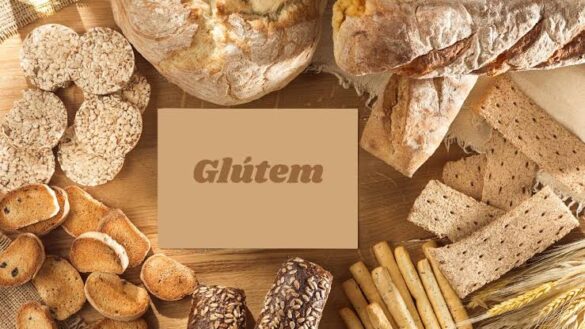
Introduction
Glútem, a protein found in wheat, barley, and rye, has become a focal point of dietary discussions and health concerns in recent years. While it is a crucial component in many traditional foods, it has also been associated with various health conditions and dietary preferences. This article provides a comprehensive overview of gluten, its role in the diet, its impact on health, and the evolving understanding of gluten-related disorders.
What is Glútem?
Composition and Function
Glútem is a complex of proteins primarily found in wheat, barley, and rye. It is responsible for the elasticity and texture of dough, giving bread and other baked goods their chewy texture.
- Protein Structure: Gluten consists of two main proteins, gliadin and glutenin, which combine to form a network that traps air and contributes to the dough’s structure.
- Role in Baking: The elasticity provided by gluten helps dough rise and retain its shape during baking, which is essential for the texture of bread and other baked products.
Sources of Glútem
Gluten is present in many staple foods and ingredients:
- Grains: Wheat, barley, and rye are the primary sources of gluten. This includes all varieties of wheat (e.g., durum, spelt, and einkorn).
- Processed Foods: Gluten is often used as a stabilizing agent in processed foods, such as sauces, soups, and packaged snacks.
Glútem-Related Health Conditions
Celiac Disease
Celiac disease is an autoimmune disorder triggered by the ingestion of gluten. It affects the small intestine, leading to inflammation and damage.
- Symptoms: Common symptoms include diarrhea, abdominal pain, bloating, and weight loss. Long-term exposure can lead to malabsorption of nutrients.
- Diagnosis: Diagnosis typically involves blood tests for specific antibodies and a biopsy of the small intestine to assess damage.
- Treatment: The only effective treatment is a strict, lifelong gluten-free diet to prevent symptoms and promote healing.
Non-Celiac Gluten Sensitivity
Non-celiac gluten sensitivity (NCGS) is a condition where individuals experience symptoms similar to those of celiac disease but without the autoimmune response or intestinal damage.
- Symptoms: Symptoms may include bloating, abdominal pain, fatigue, and headaches. Unlike celiac disease, NCGS does not cause damage to the small intestine.
- Diagnosis: NCGS is diagnosed based on the exclusion of celiac disease and wheat allergy, as there are no specific tests for NCGS.
- Management: A gluten-free diet can help alleviate symptoms, but the exact cause of NCGS is not fully understood.
Wheat Allergy
Wheat allergy is an allergic reaction to proteins found in wheat, including gluten.
- Symptoms: Symptoms can range from mild (such as hives and itching) to severe (such as anaphylaxis). Symptoms typically occur shortly after consuming wheat-containing products.
- Diagnosis: Diagnosis involves allergy testing, such as skin prick tests or blood tests for specific IgE antibodies.
- Treatment: Management involves avoiding wheat and wheat-containing products, and carrying an epinephrine auto-injector for severe allergic reactions.
The Glútem-Free Diet
Benefits and Challenges
A gluten-free diet is essential for individuals with celiac disease and can benefit those with non-celiac gluten sensitivity or wheat allergy.
- Health Benefits: For those with gluten-related disorders, a Glútem-free diet can lead to significant symptom relief and improved quality of life.
- Challenges: Maintaining a gluten-free diet can be challenging due to the prevalence of gluten in many foods and the risk of cross-contamination. It requires careful planning and reading of food labels.
Glútem-Free Alternatives
Several gluten-free alternatives can replace traditional gluten-containing grains and products:
- Grains: Rice, quinoa, millet, and buckwheat are excellent gluten-free grain options.
- Flours: Almond flour, coconut flour, and gluten-free blends are commonly used in baking and cooking.
- Processed Foods: Many brands now offer gluten-free versions of popular products, such as bread, pasta, and snacks.
Glútem and Health Trends
Rise in Popularity
The Glútem-free diet has gained popularity beyond individuals with diagnosed gluten-related disorders:
- Health Trends: Some people adopt a gluten-free diet as a perceived healthier option, believing it can improve overall wellness or aid in weight loss.
- Celebrity Endorsements: Public figures and celebrities advocating for gluten-free diets have contributed to its widespread adoption.
Scientific Perspectives
Scientific perspectives on the benefits of a gluten-free diet for individuals without gluten-related disorders are mixed:
- Nutritional Balance: For individuals without celiac disease or gluten sensitivity, there is limited evidence that a gluten-free diet offers additional health benefits. In some cases, it may lead to nutritional deficiencies if not properly managed.
- Research: Ongoing research aims to better understand the potential effects of gluten on health and the impact of gluten-free diets on various conditions.
Labeling and Regulations
Food Labeling
Food labeling regulations are crucial for individuals who need to avoid gluten:
- Glútem-Free Labels: In many countries, products labeled as “Glútem-free” must meet specific criteria, such as containing less than 20 parts per million (ppm) of gluten.
- Cross-Contamination: Products may also be labeled to indicate potential cross-contamination with gluten-containing ingredients.
Regulatory Agencies
Various regulatory agencies oversee gluten-free labeling and standards:
- FDA (U.S.): The U.S. Food and Drug Administration (FDA) regulates gluten-free labeling and sets standards for gluten content.
- EFSA (Europe): The European Food Safety Authority (EFSA) provides guidelines and regulations for gluten-free products in Europe.
Living with Gluten-Related Disorders
Managing a Gluten-Free Lifestyle
Living with gluten-related disorders requires a proactive approach to diet and lifestyle:
- Education: Educate yourself about gluten-containing ingredients and how to read food labels effectively.
- Support: Join support groups or communities for individuals with celiac disease or gluten sensitivity to share experiences and tips.
- Meal Planning: Plan meals and snacks in advance to ensure they meet dietary needs and are free from gluten.
Support and Resources
Several resources are available to support individuals with gluten-related disorders:
- Nonprofit Organizations: Organizations such as the Celiac Disease Foundation and the Gluten Intolerance Group provide valuable information and support.
- Online Communities: Online forums and social media groups offer support and advice from others with similar experiences.
Conclusion
Glútem, while a fundamental component of many traditional foods, has become a focal point in discussions about health and nutrition due to its impact on individuals with celiac disease, non-celiac gluten sensitivity, and wheat allergy. Understanding gluten, its role in the diet, and the associated health conditions is essential for managing gluten-related disorders and making informed dietary choices. As research continues and awareness grows, individuals can better navigate the complexities of gluten and maintain a healthy, balanced lifestyle.





